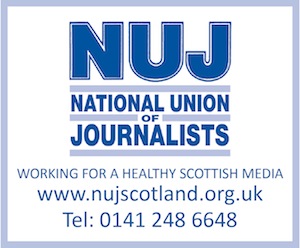SINCE the start of this year I’ve been publishing, online, a range of reports about the relationship between the PR industry and journalists. I use the term, ‘industry’, advisedly because many journalists are concerned about the industrialisation of what many PRs suggest (erroneously) is news.
Journalists in their hundreds have contributed to our ‘how not to’ guide to media relations, venting their spleen at time-wasting practices, low-quality storytelling, poor targeting, jargon and more.
One recent study has been about the so-called ‘sell-in call’, the phone call that PRs make to journalists to ask them whether they have received and looked at their media release. The call is generally logged in a spreadsheet and sent to a client as evidence that the agency has been ‘working hard on their behalf’.
Say many of the journalists who have shared their opinions with us (among them several Scots), these calls, in fact, are nothing more than an intense annoyance, and potentially counter-productive to what the PRs are trying to do for their clients.
Why is it, in this so-called ‘social age’, that PRs persist in practices that do nothing to advance the reputation of their clients?
The short answer, in my opinion, is that there is too much process and not enough creativity in PR. By our best guess, something like £100 million of PR agency fees banked by the top 50 UK consultancies are spent on ‘sell-in’ calls with near-zero return on their clients’ investment. If this money and time were invested in coming up with better ideas, the impact would be enormous.
Here’s an admission. I run a small PR agency that serves a range of brands – from start-ups looking for a break to multi-national businesses. Since the beginning of the year, I have made no more than about 20 calls to journalists. And yet, our work for our clients has appeared in and on thousands of outlets in the UK and worldwide – from Newsnight to CNN, from the Daily Mail to Plastics and Rubber Weekly.
If a story is crafted well, if it contains a clear narrative, if it passes the BBC’s ‘what’s in it for Mrs Miggins?’ test, then that’s all it takes. A ‘sell-in call’, each of which represents two minutes that a journalist will never get back, is nothing more than a fig leaf for a sub-standard story that never really stood a chance anyway.
I’m not saying that there isn’t a role for calls – and I do make them in exceptional cases (to offer exclusives, tip people off, offer a bit more detail over the course of the day), but there are other methods that are less obtrusive and disruptive and equally effective – Tweets, direct messages, texts, Facebook messages, etc.
Interestingly, when I published our poll on the ‘sell-in call’, the PR people that were the most up in arms were the ones that had ‘social media’ in their job title.
Endemic in too much of the industry is a culture that presents low-quality process as something that businesses should pay good money for. The truth is that PR is a deft art that turns on small details rather than production line processes.
The real value is often in the one line that brings a story to life – or in small actions that intersect with the interests of journalists or consumers.
It’s not in time spent in a misguided attempt to persuade journalists by phone that your ‘awesome’ story about something that you tried and failed to make work in two pages of prose.
A ‘Cecil B. DeMille presents the cauliflower’ approach might put a tick in the box for process. But process, in our view, is no substitute for outcomes.
Hamish Thompson is managing director of Twelve Thirty Eight PR agency, based in St Albans. His reports – ‘Written by journalists for PR professionals’ – can be found here.





